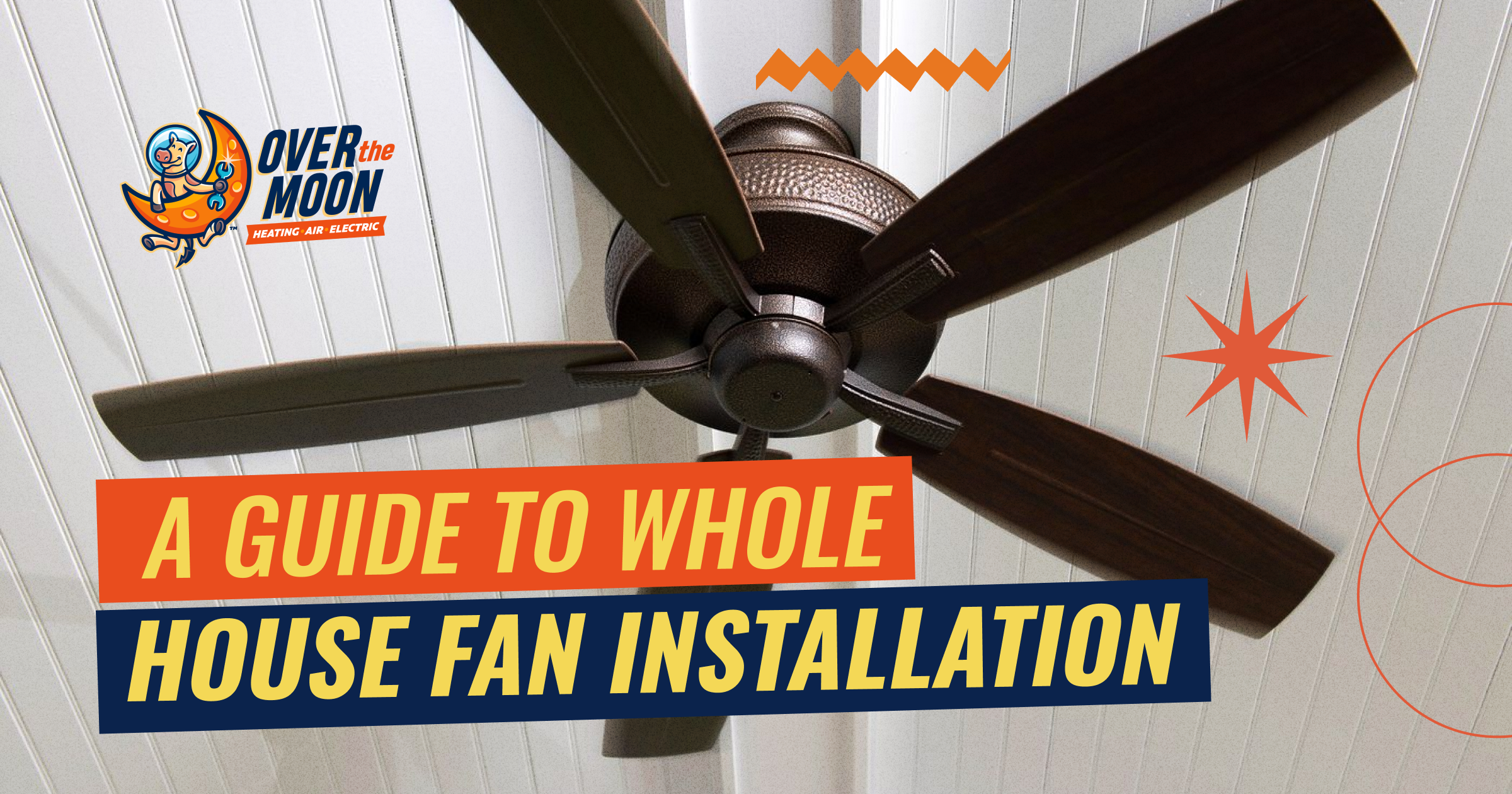A whole-house fan draws cool air from the outside to control the temperature inside your home. It also provides ventilation so you have fresher air. In addition to making things more comfortable, it can improve energy efficiency by reducing reliance on your air conditioner. But how do you install such a system? We’ll now explain the basic steps of whole-house fan installation.
Do I Need an HVAC Professional?
You can install a whole-house fan as a DIY project. Major structural modifications aren’t needed. However, there are some important considerations. One is that some wiring work will be needed to connect the unit to your electrical system. It’s best to hire a professional to wire your fan for safety reasons and to ensure you meet local regulations.
Steps to Whole-House Fan Installation
The process of installing a whole-house fan is as follows:
Gather Your Tools
You’ll need a few things to safely and effectively begin the installation. These include:
- Adequate lighting
- Planks to place across ceiling joists
- Face mask
- Protective eyewear
- Sturdy wire
- Electrical cable
- Power drill
- Screwdriver
- Floor insulation
Select a Location
The best location for whole-house fan installation is the ceiling above the top floor. A central hallway is optimal. Make sure there’s adequate clearance in the attic above. Once you have selected an ideal location:
- Insert a piece of wire through the ceiling into the attic space.
- Locate the wire in the attic above, checking for pipes, cables, and other obstructions.
- Make sure there’s room to install the fan between the joist and the ceiling.
- Mark the location of the joist closest to the wire.
- Create a cardboard cut-out outlining the dimensions of the fan. The template should fit between beams with enough clearance (check the manufacturer’s instructions for the exact requirements).
- Mark the outline on the ceiling with a pencil, and use another wire or thin blade to mark where the nearest joist is.
Cut a Hole for the Air Intake
Saw around the outline you created, or tape the cardboard template to the ceiling and cut around it. If the circular section doesn’t come loose, cut it away on either side of the joist, and leave what remains attached. Depending on the fan, the manufacturer may indicate otherwise. But for many fan assemblies, it will help provide support.
Install the Fan’s Mounting Brackets
Attach the brackets included with the whole-house fan to the unit’s casing. These are usually attached with bolts. The brackets help secure the fan unit to the ceiling joist.
Set Up the Fan’s Wiring
Depending on your jurisdiction’s electrical codes, a licensed professional may be required for this step. Whether it does or not, determine if you’re comfortable wiring the fan. If not, it’s best to have an electrician do it.
First, turn the power off at the circuit breaker. Wiring the fan is completed by connecting it to the control panel or a circuit in your home (make sure the circuit can handle the extra load). A length of electrical wire will be needed to make the connection. Follow the wiring diagram included with the product.
Install the Fan Assembly
The manufacturer’s instructions will explain how to properly install the unit. Most fans secure to the ceiling joist via the mounting brackets. The included cardboard baffles should be attached as instructed. Once the baffles are in place, install floor insulation around them; the insulating material should not touch the fan. To cover the ceiling hole, screw the louver panel to the ceiling joist.
Using a Whole-House Fan
Once your fan is installed, you can operate it. This is as simple as switching it on. But be sure to open a few windows first; this will allow the fan to draw in cool air. It also avoids having exhaust fumes drawn into your home, which can result in a dangerous backdraft from gas appliances.
Open the windows in areas you want to cool off. In areas you don’t intend to use, windows can be kept closed. Once your house is cool, close the windows and turn off the fan.
For the best results, use the fan at night or during cooler hours. If your home is sufficiently cooled, you might not need the air conditioner during the day. During the cooler months, cover and seal the fan to avoid a chilly draft.
Contact Over the Moon
At many times of the year, a whole-house fan can be an effective alternative to running the air conditioner. You’ll also need a reliable AC, even with whole-house fan installation. Over the Moon specializes in AC installation in Wisconsin and can install different types of systems. Customers also depend on us for AC repair, replacement, and maintenance including tune-ups. Our licensed technicians ensure your HVAC system works at peak performance and efficiency. Call 262-218-2881 or schedule service online today.

